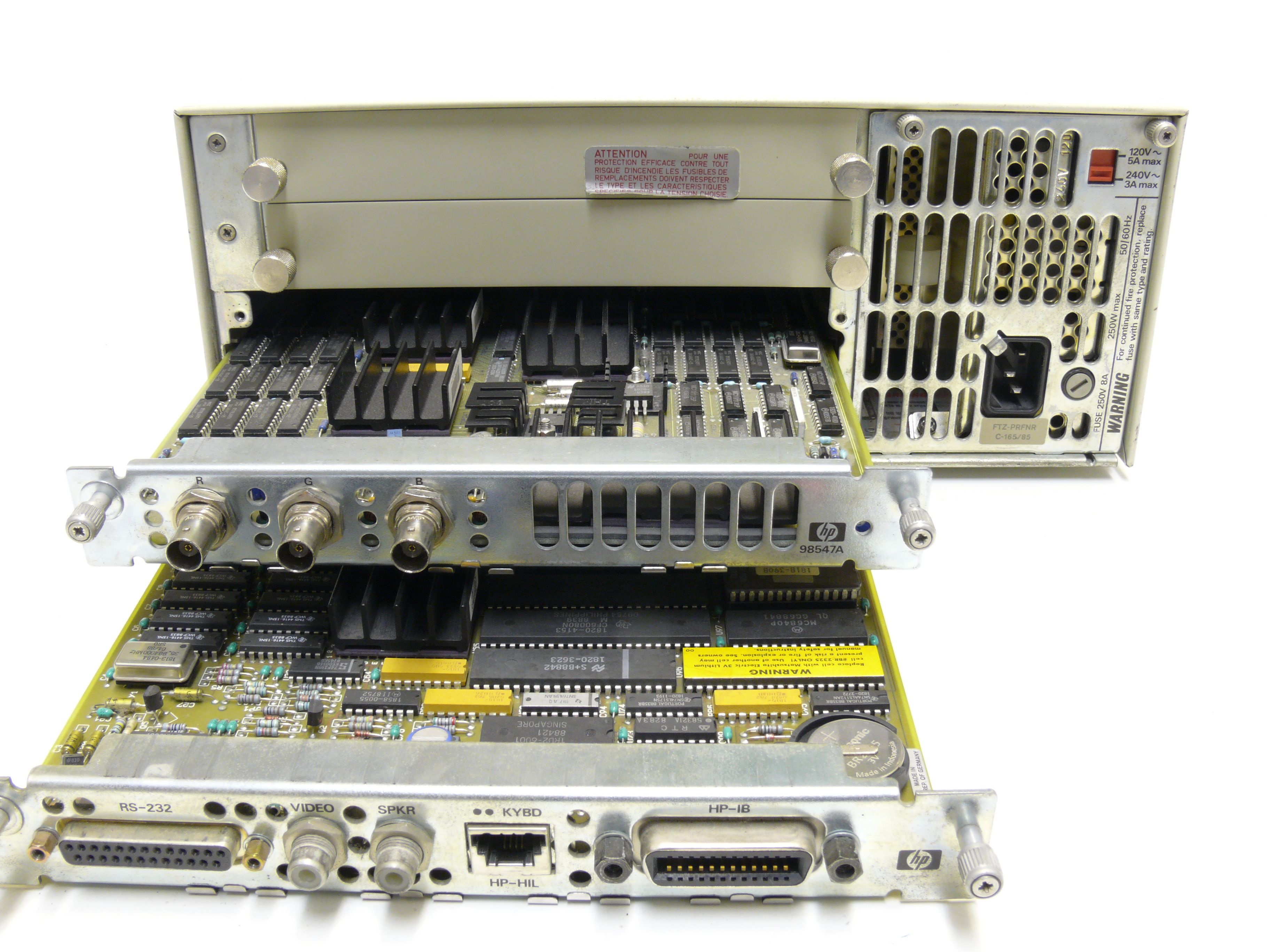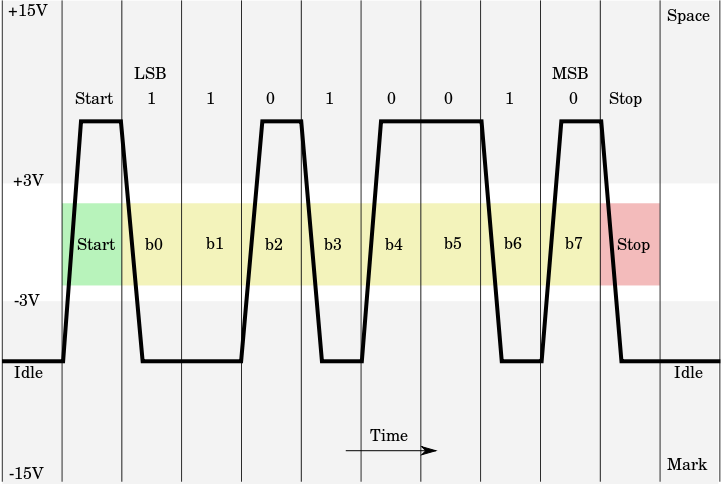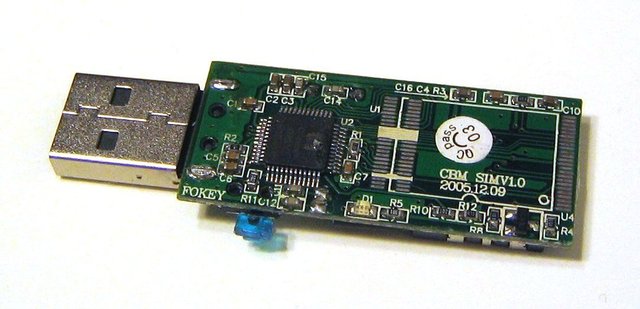DATA INTERFACES AND TRANSMISSION
Greetings of the day, noble steemians! In continuation to The World of Data Communication which I started in my last post here, therein, I started with the basic introduction to the world of data communication: how data communicate with one and other, starting from the basic understanding of data and how data is converted into the language which computer understands, i.e. zeroes and ones (0’s and 1’s), Host and Terminals were also discussed at length. Today, together with you, we shall look into the next phase in understanding Data Communication called 'DATA INTERFACE AND DATA TRANSMISSION'

[image credits: wikimedia]
STANDARD ORGANIZATION
A standards organization can be referred to as a standard body, usually an institution with authority to enforce official standards which the industry and government must follow for any specific given applications. In my last discussion, I mentioned briefly, some of the popular Standard Organization. Let’s briefly examine some of these organizations through their impact in evolution of data communication interface.
Evolution of Data Commmunication Interface
Research has made it known that new interfaces for data communication do not always come around easily due to the fact that the existing interfaces have the irresistible pull of all of the devices that users do not want to abandon. Also an already existing interface saves the expense of designing a new interface and time. Research made it known that the main reasons why the designers of the original IBM (Personal Computer) chose compatibility with the existing Centronics parallel interface and the RS-232 serial-port interface (to speed up the design process and enable users to connect to printers and modulator demodulator (modems) already on the market)can be attributed to that. Without deepening too much into all the technological development of these interface, we will only consider and discuss RS-232 serial-port interface since it is a basis of new data communication interface (Universal Serial Bus (USB)), also Universal Serial Bus (USB) will be briefly discussed due to its wide and current acceptability in the industry.
The RS-232-C Standard: A Basis of Universal Serial Bus (USB)
[image credits: wikimedia]
As we can see the port RS-232 from the diagram above, this is called ‘Recommended Standard 232’, with C" represents the current version. It was first introduced in 1960 for serial communication transmission of data. The Electronic Industries Association (EIA) EIA’s Recommended Standard called 232C or RS-232-C and there are variants including RS-232C, RS-232D, V.24, V.28 and V.10, RS-232-C is one of the most common and popular interface standards for data communication in those days , it was used for connections to data storage, uninterruptible power supplies, modulator-demodulator (modems), printers, mice, and other peripheral devices. It defines how ones and zeroes are to be electronically transmitted, including the voltage levels needed as well as the other electronic signals necessary for computer communication to take place.
The (ITU)(CCITT) which happened to be the main international body fostering the cooperative standards for telecommunications equipment and systems also has standards similar to EIA’s RS-232C, known as V.24 and V.28. The V.24 standard defines all of the signals described in RS-232-C and the V.28 standard defines the same voltage levels described in RS-232-C.
RS232 Specifications TRANSMITTED SIGNAL VOLTAGE LEVELS:

[image credits: wikimedia]
RS-232-C defines the process of sending a 1, known as a mark as an electronic signal between -3 and -15 volts and defines the process of sending a 0, known as a space as an electronic signal between +3 and +15 volts. Signals outside these ranges are considered undefined - neither a one nor a zero and are ignored by the receiver.
A terminal communication according to RS-232-C must therefore be able to send and receive voltage in the range of -15 to + 15 volts. For example, to send the ASCII letter “A” with a 0 as the parity bit, or 01000001, an asynchronous RS-232-C, terminal must first send (starting from the left. i,e, most significant bit) the start bit, a 0, or +15 volts, followed by a 1, or -15 volts, followed by five 0’s or five +15 volts pulses, then another 1 or a -15 volts pulse followed by a 0 or a +15 volts pulse and finally the stop bit, or -15 volts.
Universal Serial Bus (USB)

[image credits: flickr]
The Universal Serial Bus (USB) was developed and designed from the onset to be a data communication interface with many types of peripheral devices and without the limits and frustrations of older interfaces. All the recent personal computer and Macintosh computer includes Universal Serial Bus (USB) ports that can connect to standard peripheral devices such as keyboards, mice, scanners, cameras, printers, and drives as well as custom hardware for just about any purpose. I am sure the system/phone you are using now have one.
Once you want to use computer to communicate with any other device, Universal Serial Bus (USB) is a likely solution. The communication interface is so suitable and convenient for mass produced, standard peripheral types as well as small volume designs, including one-of-a-kind projects. In order to be successful in today’s computing world, a good data communication interface must please two people : the end users who want to make use of the peripheral device and the developers or designers who design or develop the hardware and write the code that communicates with the device. Universal Serial Bus (USB) has both features to please both.
It has good Operating System Support, in fact, Windows 98 was the first Windows operating system with reliable support for USB, and all the editions that followed it, including Windows 2000, Windows Me, Windows XP, and Windows Server 2003, Window vista, Window 7, Window 8, Window 10 and so on, they all support USB as well.
SUMMARY AND CONCLUSSION
The manufacturers of Terminals and Host computers usually and mutually agree to certain recognized standards in other to connect their devices. In the past some standards were introduced and promoted by a manufacturer and become so successful that they later became the standard for the Industry standard while others are formed by the standard organization. These organizations are generally chartered to device standards for a particular industry within certain countries. Most times, standards are developed by committees with representatives from top leading companies in an industry. Many certain standards organizations, especially, those covering military products, also have government representatives.
References
Fundamentals of RS-232 Serial Communications
The RS232 Standard
Jan Axelson (2005). USB Complete: Everything You Need to Develop USB Peripherals, Third Edition
Serial communication – RS232
Introductiomn to Serial Communications
RS-232
Serial Communications
BASICS OF DATA COMMUNICATION AND COMPUTER NETWORKING By: Kaushalya
DATA COMMUNICATION AND COMPUTER NETWORKS
Data Communication & Network Standards By: F.Y.B.Sc. (IT) (Semester II)
010101010101010101010101010101010101010101010101010101010101010101
Thanks for reading through,
Until my next post,
keep on sending zeroes and ones.
If you write STEM (Science, Technology, Engineering, and Mathematics) related posts, consider joining #steemSTEM on steemit chat or discord here. If you are from Nigeria, you may want to include the #stemng tag in your post. You can visit this blog by @stemng for more details. You can also check this blog post by @steemstem here and this guidelines here for help on how to be a member of @steemstem. Please also check this blog post from @steemstem onproper use of images devoid of copyright issues here.

Being A SteemStem Member